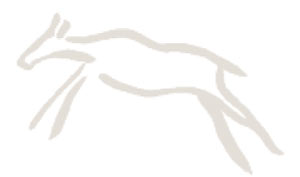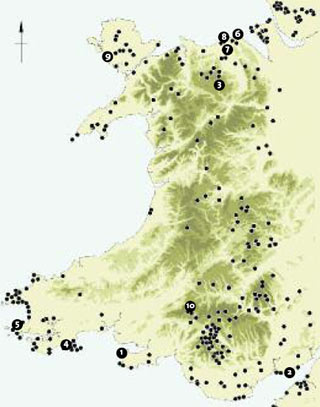
 |
The distribution of known Mesolithic sites in Wales |
|
 |
1 Burry Holmes |
The Mesolithic in Wales The warming of the climate that heralded the end of the last Ice Age approximately 12,000 years ago caused the steady melting of the ice sheets, the raising of sea levels and the subsequent gradual inundation of vast areas of low lying land causing the isolation of Britain from the rest of Europe. The warmer climate and ensuing changes in vegetation during this period allowed the Mesolithic hunter-gatherers to exploit both land and marine resources, with settlement perhaps focused in coastal areas and river valleys. Nevertheless, there is some evidence of the utilisation of the uplands in the early Mesolithic as at Waun Fignen Felin in the Brecon Beacons. The distribution map of known Mesolithic sites in Wales shows a concentration of sites in coastal locations particularly along the north and south coasts, indicating that the Welsh shoreline area offered an abundant source of food and other materials. These coastal sites include the earliest dated Mesolithic site in Wales, The Nab Head at St Brides Bay, at around 10,500 years ago. As time progressed rising sea levels caused the hunter-gatherer people to move into and adapt to new environments. In the later Mesolithic there is evidence of the increasing exploitation of upland areas, as seen at the apparent seasonal hunting sites around Llyn Brenig, Denbighshire. It has long been thought that, as in the Palaeolithic period, the transient nature of Mesolithic life is the reason so few settlement sites are located across Wales or in fact the British Isles; certainly there are no examples of houses known in Wales. Excavations have, however, identified ‘task sites’ such as those for the processing of food or for making tools, like The Nab Head at St Brides Bay in Pembrokeshire. In contrast, fieldwork elsewhere in Britain has identified Mesolithic settlements at Howick, Northumberland, and more recently in 2010 at Star Carr, North Yorkshire, where perhaps the oldest known Mesolithic house in the British Isles, built approximately 11,000 years ago, has been recorded. The house was 3.5 metres wide and was held up by a circle of wooden posts. The house was occupied over a long period of time, possibly for as much as 500 years. The site has yielded far more possessions than one would think normal for bands of hunter-gatherers on the move. These include a boat paddle, beads, arrowheads and antler headdresses, suggesting rituals developed alongside domestic life.
|